Understanding your line
Your glucose line is your live energy state.
The glucose line is at the heart of Limbo. It shows how much energy (glucose) is circulating in your bloodstream. Your body only needs around a teaspoon (5 grams) of glucose in circulation. That would bring the line to the middle of the screen, or the Energy State number to 5.2.
But it’s not about chasing numbers.
It’s about understanding patterns and training your body to create better ones.
When you learn to read your glucose line, you can literally see how your food, movement, sleep, and stress shape your metabolism.
It takes a while to get the hang of it.

Foundational point: how long it takes to absorb and assimilate a meal
This is important. Your body only uses your food after it’s broken down to the molecular level. There’s a long passage that starts after you put food or drink in your mouth and it takes 3 to 5 hours to break food down so it can be used for energy or building blocks.
Everyone has a slightly different metabolism, but you'll notice moves in your line 20 to 40 minutes after you've eaten something. That's when you start absorbing particles of the food. How the line behaves will depend on what you've eaten. You'll work out what causes this as you go through the program.

With this in mind, you can use the app's zoom levels to notice different patterns.
- 1 hour: Zoom in to see exact spikes and dips. Perfect for understanding short-term meal responses and working out whether you’re starting to spike.
- 4 hours: Great for checking how one event (like a meal or workout) shapes the line.
- 12 hours: See half your day. Track fasts, meals, and movement patterns clearly.
- 24 hours: The full picture. Spot daily rhythms, dips, and overall energy balance.
Focus on the shape, not the numbers
As you go through Limbo, focus on the shape of your line:
-
Is it flat-ish after eating and steady?
→ You’re stabilizing your metabolism and allowing fat burning.
-
Is it full of big spikes and crashes caused by food?
→ You’re still overloading your system with energy, stressing it out.
-
Is it going up slowly after meals and coming back down slowly?
→ Great — your body is processing the meal and resetting.
-
Is it rising slowly overnight?
→ Could be late eating, bad sleep, stress, dehydration.

What is a spike?
A food-driven glucose spike is a rise of more than 1 mmol/L within 20–60 minutes of eating or drinking something. They tend to rise gradually and can come with accompanying crashes caused by insulin clearing glucose from the blood.
Other glucose spikes are caused by physiological events not involving food. They tend to be instant and reduce quickly.
What is a flat line?
A flat line doesn’t mean no movement.
It means small, controlled rises and smooth returns to baseline like gentle waves, not chaotic storms.
In numbers:
We aim for glucose changes of less than 1 mmol/L in any 30–60 minute period after eating.
In feel:
You’ll notice more steady energy, better mood, fewer cravings.
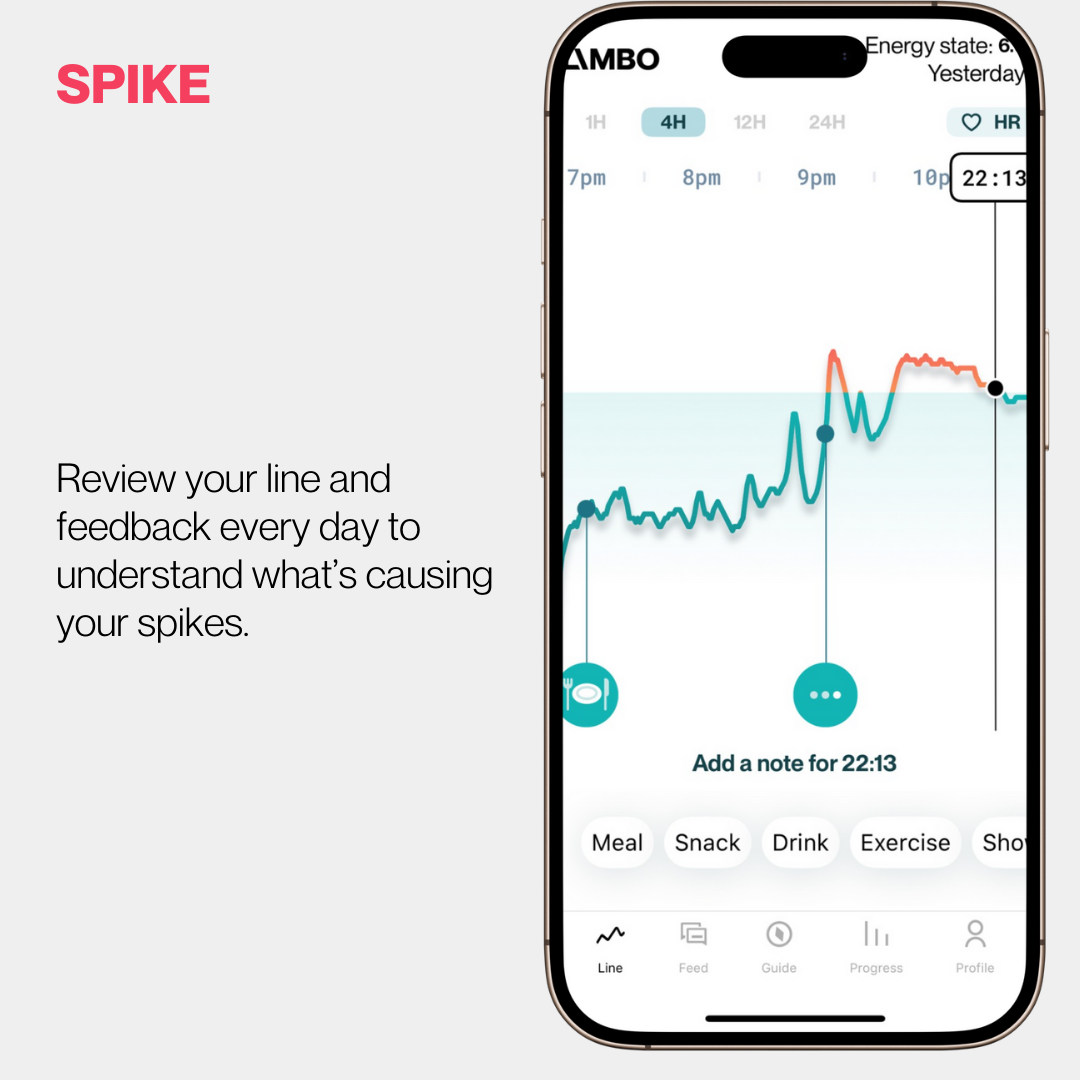
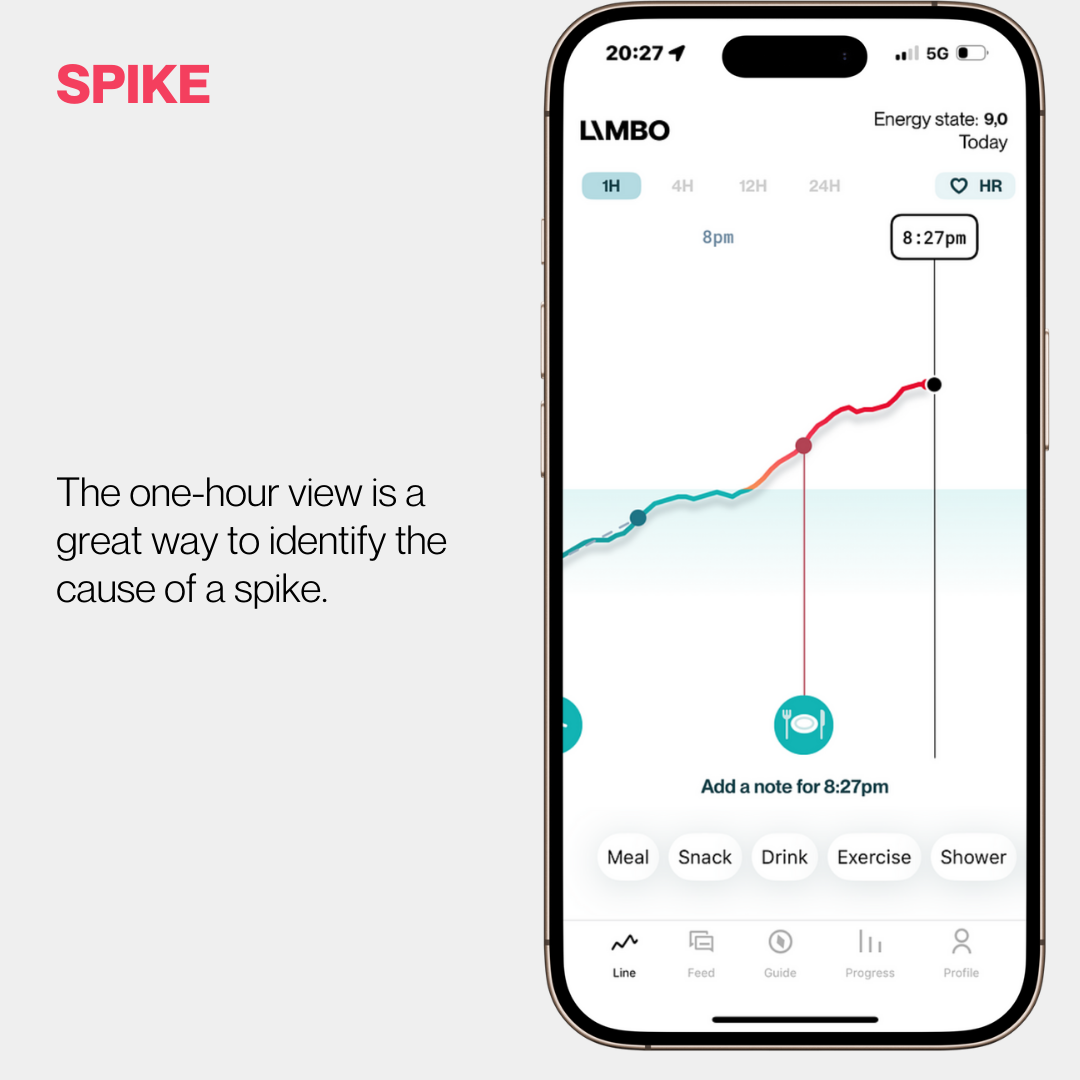

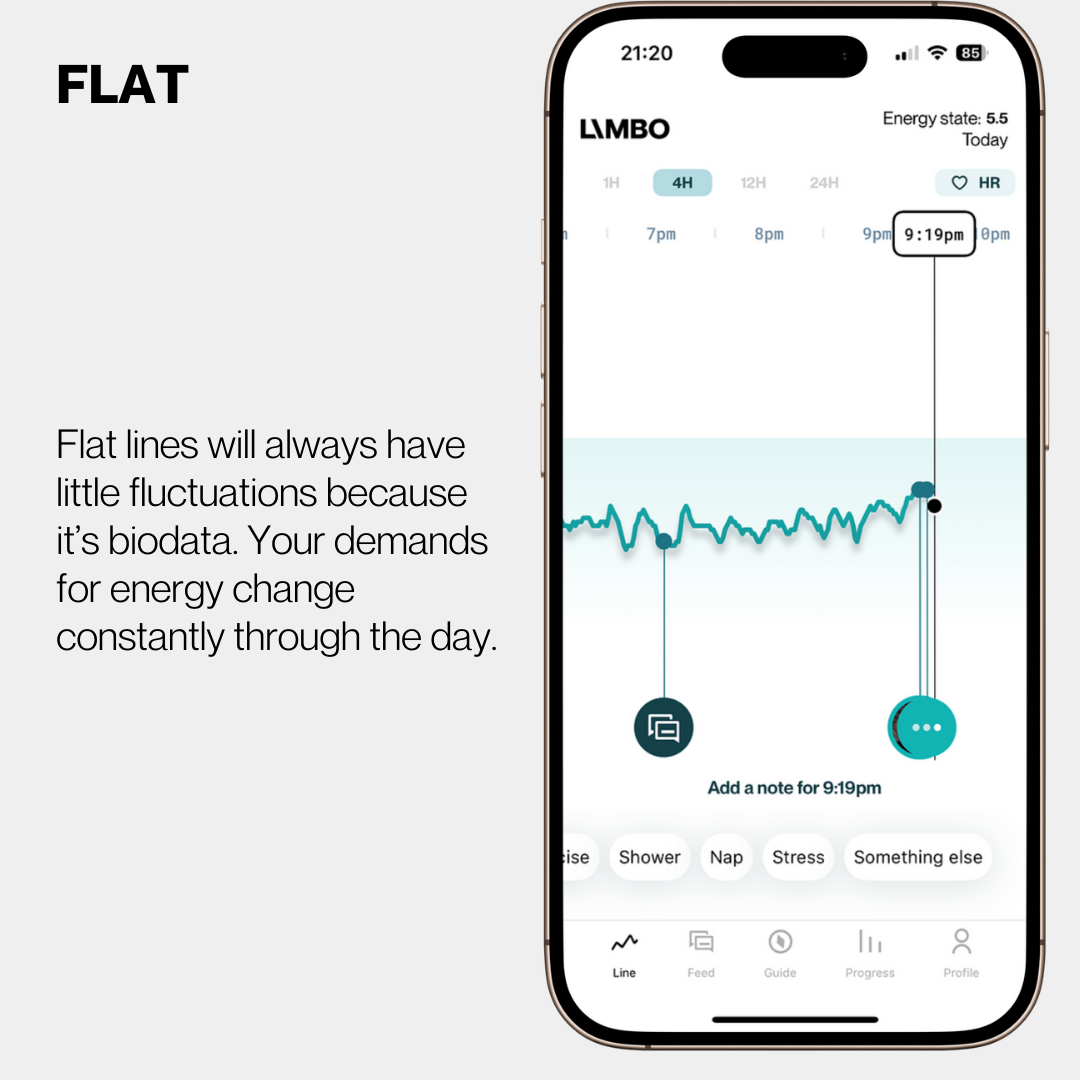
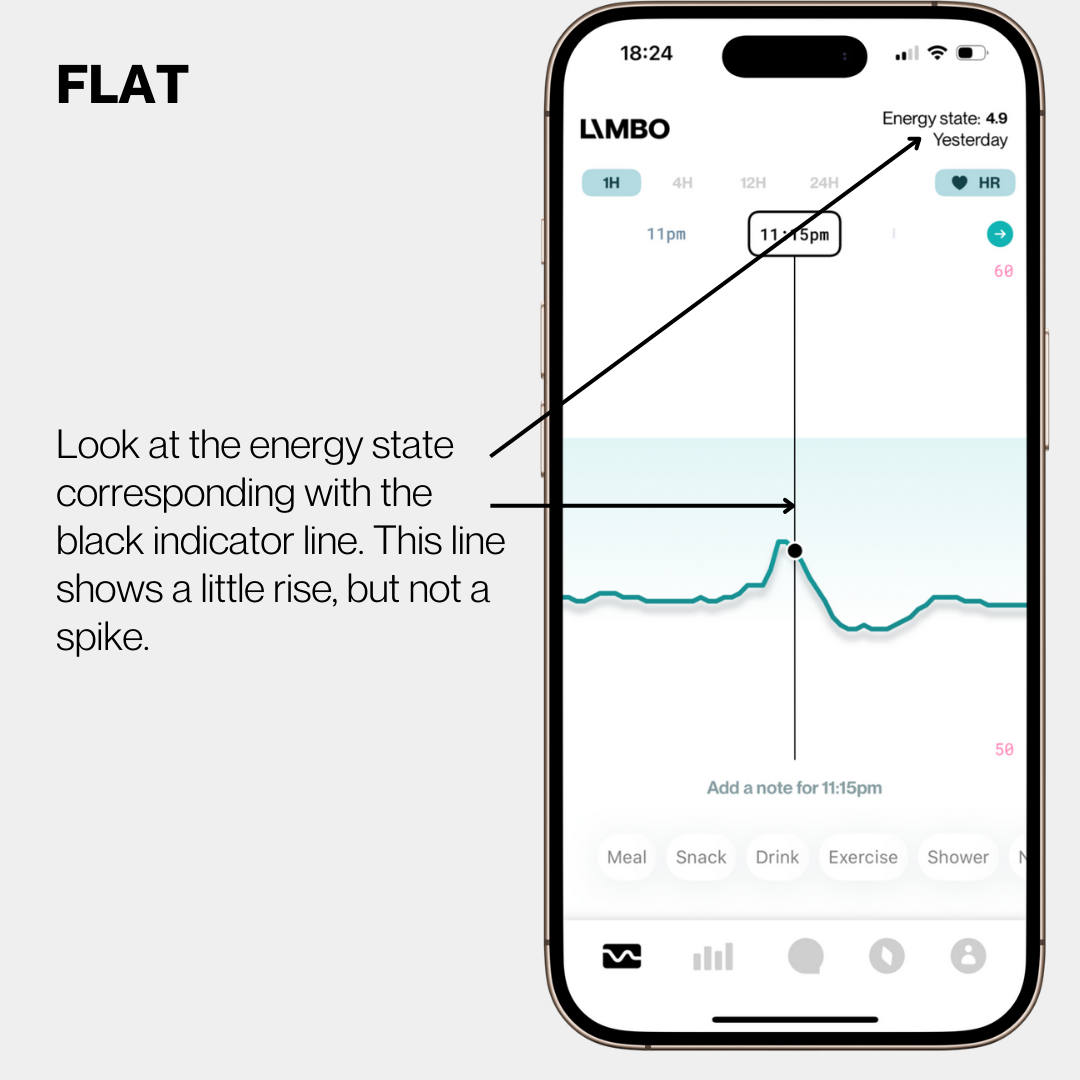
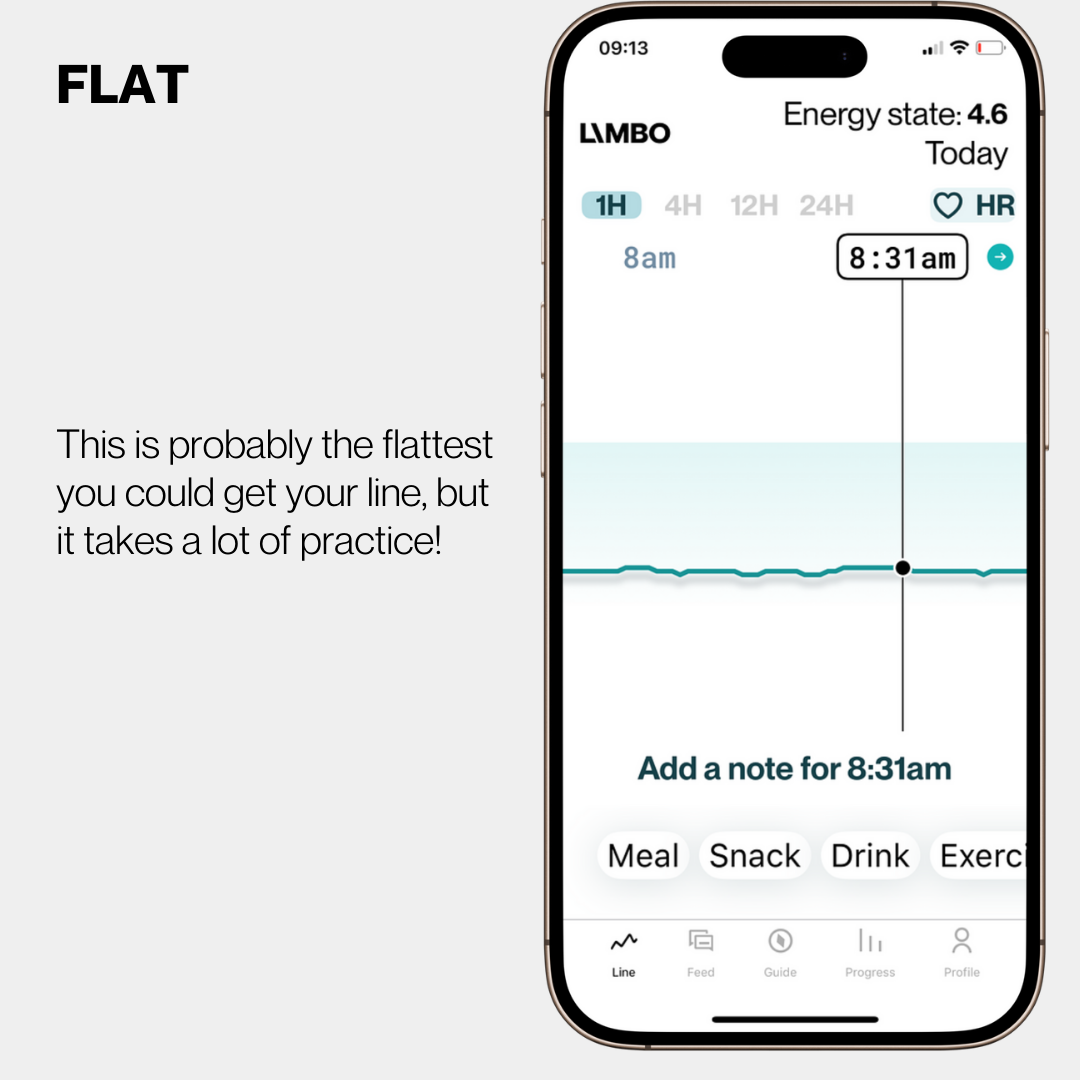
What is a flat line?
A flat line doesn’t mean no movement.
It means small, controlled rises and smooth returns to baseline like gentle waves, not chaotic storms.
In numbers:
We aim for glucose changes of less than 1 mmol/L in any 30–60 minute period after eating.
In feel:
You’ll notice more steady energy, better mood, fewer cravings.
Learn more
📈 Understanding your line →
🌡️ Factors affecting your line →
⚪️ Looking after your sensors →